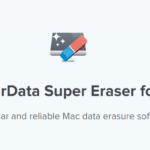Shweta Nagpal is a new HR Manager at TWBC Communications. And as any new employee would be, she is curious to learn about the attendance management in place. Being an ad agency, she expects the place to have flexi hours and rotational shifts put in place… So on day one itself, she approaches the HR department to explain this to her.
Time Attendance Management System Rules

Ronnie D’Souza, the Head of the HR, explains to her in detail how the time and attendance system would function. He explains, “The attendance management program in a TWBC starts with creation of shifts. There is a provision in the online attendance system to create shifts having their respective IN/OUT time, applicable grace time, code, etc.
You could also mark special shifts, which span across two dates. This means you can automate our business rules’ implementation without having to manually administer the policies. The attendance tracking software is highly flexible so that it is customized to suit our business requirements.”
Shweta retorts, “What’s the next step?”
Ronnie explains further, “The next subsequent step is the creation of shifts. This is called as Shift Logic. Here’s a document I had prepared for new employees to read… Have a look!”
Shweta reads the document:
Shift Logic
Here, the system computes total hours based on work done during Shift Time. If multiple swipes are provided, hours are computed by the attendance tracker based on all in-out swipes done during the time of the shift. The excess hours to be computed are based on hours done outside the Shift Time.
Absent-marking criteria
Firstly, there should be an absent marking criteria in place for an the attendance system to function. An absent-marking criteria defines rules for marking an employee absent for a day. It will clearly define the minimum work hours of the company, late in /early out margin, partial swipes, etc.
One has to note that an online attendance system calculates the total hours based on FIT (First In Time) and LOT (Last Out Time), even if multiple swipes are provided ignoring all those swipes falling in between FIT and LOT.
Absent-marking criteria can further be classified as:
Employee will be marked absent, if no swipes are available for that day or date.
Employee can be even marked present, if only one swipe is available either In or Out for that day or date.
Absent-marking criteria can be defined based on Shift-Wise or Day-Wise.

Absent-marking Criteria on Shift-Wise Basis: If employee works more than or equal to 10 hours in night shift, only then employee can be marked present for the whole day else the employee will be marked absent based on the no. of hours put in by the employee for a particular session.
Absent-marking Criteria on Day-Wise Basis: Irrespective of any shifts assigned to the employee for the week, if the employee works greater than or equal to eight hours from Monday-Friday, then mark the employee as present. But on Saturday, if an employee works even for six hours, mark the employee as present.
An employee will be marked as absent if total hours is less than threshold. If less than full-day threshold, second session will be marked as absent. (This is normally used when flexi-hour logic is selected).
An employee will be marked as absent if actual hours is less than threshold. First session or second session will be marked absent based on whether an employee has come in late or gone out early.
For example, actual hours is nothing but the difference of all in and out swipes, if multiple swipes are provided. System will sum up all the difference of In/Out and if the total of such actual hours is more than the threshold specified, system will mark employee as present or absent, respectively. 🙂
This is how rules for attendance are setup on automated attendance system. 🙂
Join 25,000+ smart readers—don’t miss out!







3 Comments
We no need to worry about the tracking of employees, when we have a quality Payroll Management System. Thank you for this blog.
The features herein provide a clear breakdown for any SMB to kick-start a journey to efficient. Thanks for @Barot this information.
Quite a comprehensive analysis. Thank you for giving me the answers i was looking for.